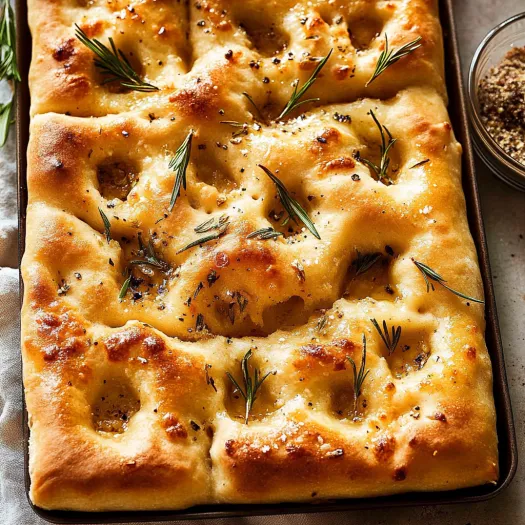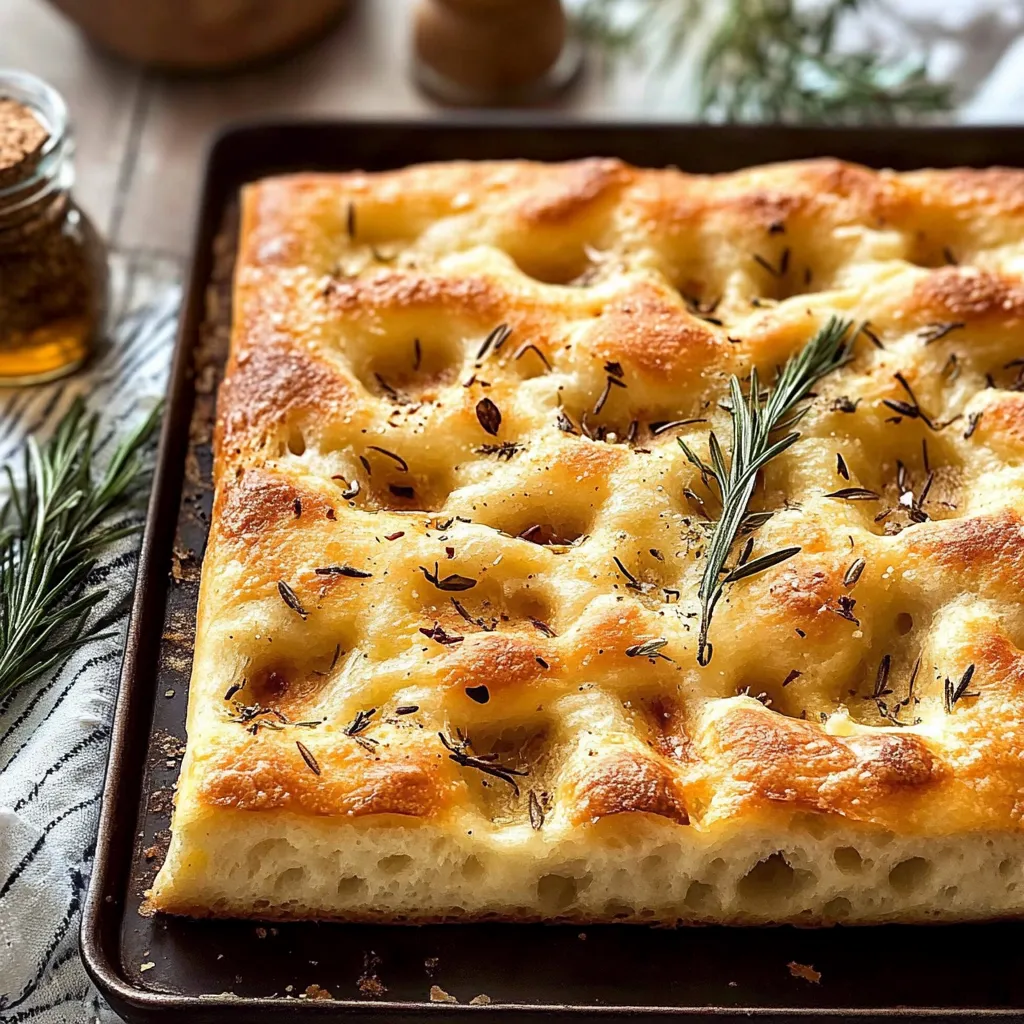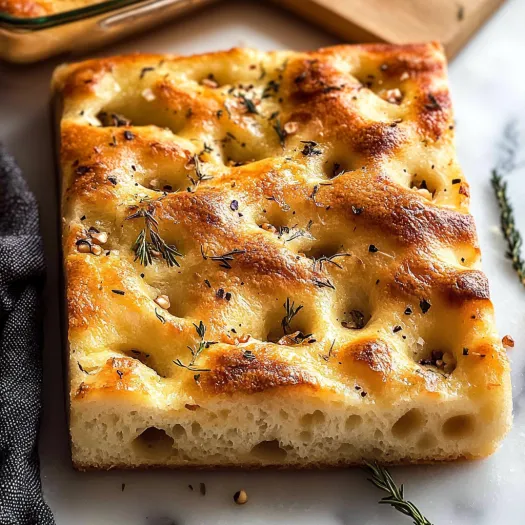 Pin
Pin
A perfectly dimpled surface glistening with olive oil, fragrant rosemary and garlic scenting the kitchen, and an impossibly light, airy texture that melts in your mouth - this is authentic Pugliese potato focaccia. The addition of potato creates a uniquely tender crumb and perfect chew that sets this bread apart from standard focaccia recipes. This traditional method from Italy's Bari region transforms basic ingredients into an extraordinary loaf of bread.
The technique of incorporating potato into focaccia was passed down through generations of Italian bakers. While initially unconventional, this ingredient creates an unmistakably superior texture. The potato adds moisture and tenderness while developing the characteristic chewiness that makes this version remarkable. This recipe consistently impresses guests who can't believe it was made at home.
Key Ingredients

- Bread flour: High-protein flour (12%+) develops proper gluten structure
- Russet potato: Creates exceptional moisture and distinctive texture
- Extra virgin olive oil: Provides authentic flavor and crispy exterior
- Instant yeast: Ensures reliable rising without proofing
- Sea salt flakes: Adds crucial flavor and textural finish
- Fresh rosemary: Delivers classic focaccia aroma
- Garlic confit: Offers sweet, mellow garlic notes
- Warm water: Activates yeast and creates proper hydration
Preparation Steps
- Initial Mixing:
- Combine bread flour, instant yeast, sugar and salt in a large bowl. Form a well in the center, add warm water and olive oil. Mix until no dry flour remains. Incorporate mashed potato thoroughly. Dough will be wet and shaggy.
- First Rise:
- Cover bowl and let rise 30 minutes in a warm spot until visibly puffy. The dough should increase by half in volume during this initial fermentation.
- Folding:
- Transfer dough to an oiled bowl. Fold edges toward center to build structure. Cover and let rise another 30 minutes.
- Pan Preparation:
- Coat a 9x13 inch metal pan with olive oil, ensuring complete coverage of bottom and sides.
- Shaping:
- Place dough in pan, gently stretching toward edges. Allow brief rests if dough resists stretching.
- Final Rise:
- Cover pan and proof 40 minutes. Meanwhile, prepare garlic confit by warming minced garlic in olive oil.
- Dimpling:
- Create signature dimples across surface with fingertips. Add olive oil, garlic confit, rosemary and sea salt.
- Baking:
- Bake at 450°F for 20-25 minutes until deeply golden. Remove from pan immediately and cool slightly before serving.

This potato focaccia represents the perfect marriage of traditional technique and clever innovation. The striking contrast between the olive oil-crisped exterior and cloud-like interior creates an exceptional bread experience. While delicious with toppings, the bread's true character shines when served plain, allowing the pure flavors of olive oil, sea salt and properly fermented dough to take center stage.
Recipe Q&A
- → What does adding potatoes do for the focaccia?
- Mashed potatoes help the bread stay moist and airy inside, while keeping the crust beautifully crunchy. Plus, this little addition makes the bread last longer without drying out!
- → Can regular flour be a substitute for bread flour?
- You sure can, but keep in mind the texture might feel less chewy. Bread flour is your best bet for the ultimate result, especially if you're serving this to others.
- → What's the reason behind adding dimples to focaccia dough?
- Those classic dents aren't just for looks. They trap the olive oil and toppings, boosting flavor while stopping the dough from puffing up too much as it bakes.
- → Is it possible to make the dough ahead of time?
- Not the best idea in this case. Focaccia dough doesn't hold up well when left in the fridge for days—its rise power declines, leaving you with denser bread.
- → What’s the best way to keep leftover focaccia fresh?
- Keep it in a sealed plastic bag for a couple days. To bring back its crunch before serving, warm it up in the oven—it’ll be as good as freshly baked!
- → Why cook the garlic in oil before using it on the focaccia?
- Baking with raw garlic at high heat could make it burn. Gently cooking it in oil softens it, making it golden brown and delicious instead of bitter.
